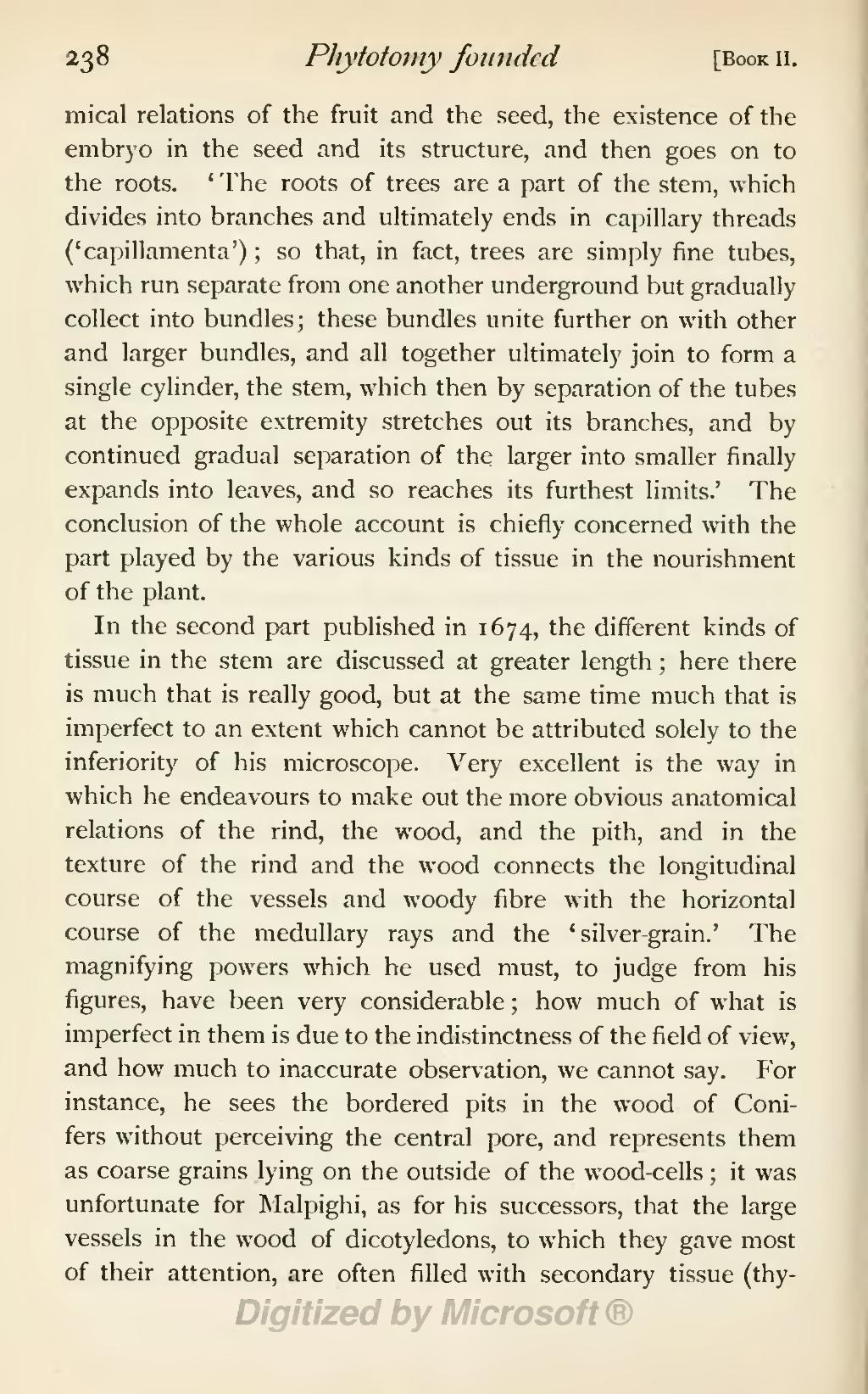mical relations of the fruit and the seed, the existence of the embryo in the seed and its structure, and then goes on to the roots. 'The roots of trees are a part of the stem, which divides into branches and ultimately ends in capillary threads ('capillamenta'); so that, in fact, trees are simply fine tubes, which run separate from one another underground but gradually collect into bundles; these bundles unite further on with other and larger bundles, and all together ultimately join to form a single cylinder, the stem, which then by separation of the tubes at the opposite extremity stretches out its branches, and by continued gradual separation of the larger into smaller finally expands into leaves, and so reaches its furthest limits.' The conclusion of the whole account is chiefly concerned with the part played by the various kinds of tissue in the nourishment of the plant.
In the second part published in 1674, the different kinds of tissue in the stem are discussed at greater length; here there is much that is really good, but at the same time much that is imperfect to an extent which cannot be attributed solely to the inferiority of his microscope. Very excellent is the way in which he endeavours to make out the more obvious anatomical relations of the rind, the wood, and the pith, and in the texture of the rind and the wood connects the longitudinal course of the vessels and woody fibre with the horizontal course of the medullary rays and the 'silver-grain.' The magnifying powers which he used must, to judge from his figures, have been very considerable; how much of what is imperfect in them is due to the indistinctness of the field of view, and how much to inaccurate observation, we cannot say. For instance, he sees the bordered pits in the wood of Conifers without perceiving the central pore, and represents them as coarse grains lying on the outside of the wood-cells; it was unfortunate for Malpighi, as for his successors, that the large vessels in the wood of dicotyledons, to which they gave most of their attention, are often filled with secondary tissue (thy-
